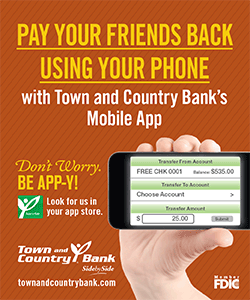|
 Fortunately, we've gathered a virtual roundtable of people who
know what they're talking about when it comes to travel under
intense conditions. Whether you favor planes, trains or automobiles,
they've got handy advice on how to get you where you're going — and
home again — with safety and minimal headaches. Fortunately, we've gathered a virtual roundtable of people who
know what they're talking about when it comes to travel under
intense conditions. Whether you favor planes, trains or automobiles,
they've got handy advice on how to get you where you're going — and
home again — with safety and minimal headaches.
THE METEOROLOGIST
Holiday drivers can usually tell in advance what route they should
take — if they pay attention to weather patterns from thousands of
miles away, says the warning coordination meteorologist at the Storm
Prediction Center in Norman, Okla.
"Look west," Greg Carbin says, "and you'll get a sense of what's
coming."
Weather patterns typically cross the country in three to four days.
So if there's stormy weather on the West Coast on Monday and in the
Rockies on Tuesday, you can figure out what Wednesday and Thursday
will bring.
It takes anywhere from 12 to 24 hours for a weather system to pass
over a specific location in the United States. So people can avoid
driving in bad weather if they are willing to shift their start
times. "Do I want a head start so I can beat it, or wait until it
passes?" he asks.

Carbin uses his son, Jon, a cellist, as an example. Jon Carbin
played with the Trans-Siberian Orchestra in Kansas City two nights
before Christmas in 2009 — just as a winter storm bore down on the
family home in Oklahoma.
"I told him, 'You have to get going as soon as the concert is over
or else you are not going to make it,'" Greg Carbin says. "He wanted
to sleep." That year, Jon Carbin joined the family Christmas dinner
via Skype and ate pizza in a hotel.
— Kelly P. Kissel, Little Rock, Ark.
___
THE AIR-TRAVEL SPECIALIST
It might seem obvious, but the best thing a Thanksgiving traveler
can do is arrive at the airport early.
There aren't necessarily more people flying; it's just that more of
them are less experienced. Business travelers typically don't check
bags, wear slip-on shoes for security and aren't trying to buckle
fidgety toddlers into seats. So the influx of once-a-year fliers
creates long lines.
"Air travelers set themselves up for failure by playing fast and
loose with the clock," says George Hobica, founder of
AirfareWatchdog.com. "It's hard for type-A personalities to wait
around at airports."
There can be traffic, parking lots tend to fill up on holidays and
you never know how long check-in and security lines will be.
Most airlines require your bags to be checked up to an hour early.
That means you need to be at the front of the line with luggage
tagged. And be at the gate at least 15 minutes before departure or
you risk the plane leaving without you.
"If you find yourself with time on your hands, grab a meal before
flight. More airports have very good restaurants these days," Hobica
says. And if you arrive early, you might even get an earlier flight.
—Scott Mayerowitz, AP Airlines Writer, New York

___
THE DRIVING EXPERT
In snow, ice or rain, speed is the enemy.
Driving too fast for conditions is among the biggest mistakes people
make when navigating wintry weather, says Bill Van Tassel, manager
of driver education for the American Automobile Association.
"It's much harder to get into trouble if you're going at a speed
where your tires can maintain traction on the surface," says Van
Tassel, who holds a doctorate degree in safety education.
His advice:
-
Make sure you have decent tire treads and wiper blades.
-
Keep eight or more seconds of driving distance behind the car in
front of you.
-
Expect ice on every bridge.
-
Don't steer and brake at the same time.
-
If there's a crash in heavy freeway traffic, generally stay belted
until vehicles behind you have stopped. Only then should you move
away or get out to help.
—Tom Krisher, AP Auto Writer, Detroit
___

THE PACKING ARTIST
First, pack a suitcase with everything you'll need. Then take half
of it out. That's the not-so-tongue-in-cheek advice from Rudy Maxa,
who knows a thing or two about packing.
Maxa hosted National Public Radio's "Savvy Traveler" show and is
heard on more than 140 radio stations. On Tuesday, unsurprisingly,
he was traveling.
If you can't bear to part with too many clothing items, Maxa says,
at least be efficient. "You shouldn't bring anything you can't mix
and match and change around," he says. "Everything you pack should
go with everything else you pack."
Maxa recommends shipping items ahead. That includes holiday gifts —
the ones you're giving and the ones you'll receive at your
destination. Don't worry, he says, if your bag is checked at the
gate because the overhead compartments are filled: That will
probably mean a shorter wait at your destination.
—David Porter, Newark
___
[to top of second column] |

THE PLOW BOSS
Mark Fischbach says motorists who encounter roads that are slushy,
icy, snowy or just plain nasty need to keep two words in mind: Be
patient.
Fischbach has more than 20 years of snowplow-driving experience in
Minnesota, a state that knows frigid winters. He knows snowplows are
big — weighing up to 17-times more than a car — and sometimes slow,
but he says motorists need to give plow drivers space to do their
jobs.
"I've seen people try to pass a snowplow by trying to go through a
ditch. That's pretty crazy ... they ended up getting stuck," he
said. "We're out there because the roads are slippery."
Fischbach, who works for the Minnesota Department of Transportation
and currently oversees snow and ice removal on 5,500 miles of
highway lanes in the Minneapolis-St. Paul metro area, also says
motorists can do themselves a favor by verifying the basics: that
their tires, brakes, headlights and windshield wipers are in working
order.
And, he says, drivers need to slow down in inclement weather.
Fischbach says he loved driving a snowplow. "During the middle of
the night, when it was snowing and everything was white, it was just
so beautiful," he says. "Until the snow started turning brown."
—Amy Forliti, Minneapolis

___
THE APP GUY
"Stay home. Have your butcher spatchcock your turkey," says Apple's
former chief evangelist Guy Kawasaki, who constantly travels in and
out of the Silicon Valley. But if you must go, he says, the It app
for road warriors is Flightboard.
"It enables you to see the flight board in airports," he explains.
Any airport.
Why is this important? "Let's say you're connecting through Denver
to get to San Francisco. You find out that your flight is delayed
because of fog," he says.
Fog slithers in and out of Bay area airports at this time of year.
It can cling to San Francisco's runways for hours, hover above
Oakland, or nestle in at San Jose. With this app, travelers can
figure out which airports are open and what flights are heading
there.
Other app thoughts: Gogobot, Tripomatic and Viator offer ways to
spend time away from the Thanksgiving table while on vacation, and
Packing Pro is a peacemaker for parents helping the family figure
out what to bring.
—Martha Mendoza, AP National Writer, San Jose, Calif.
___
THE TRAIN-PASSENGER ADVOCATE
For a smoother train trip, get to the station early. And don't
forget your smartphone. It can help you keep track of any possible
delays.
You should arrive at the station at least 45 minutes before
departure time, says Ross Capon, president and CEO of the National
Association of Railroad Passengers, which advocates for better rail
service in the United States. Arriving early gives you a better shot
of picking where you want to sit. Most trains don't have assigned
seating, so if you're traveling with friends or family you have
better chance of sitting together by getting to the station early.
Amtrak riders should download its app, which will alert you to the
status of any train if you input its number.
Amtrak also posts any delays or disruptions on its Twitter accounts.
Different regions have different accounts. Delays on the Northeast
corridor are posted at Twitter.com/AmtrakNEC, for example. Do an
online search before to see which account to follow.
—Joseph Pisani, AP Business Writer, New York
 ___
THE HIGHWAY EMERGENCY TRAINER
Around Atlanta, where traffic is notoriously snarled during normal
rush hour, holiday travel can be especially tough.
"We have gridlock traffic all day long," says Elnora Redd, a driver
and field training officer with the Georgia Department of
Transportation's Highway Emergency Response Operator, or HERO,
program.
To avoid the worst of it, people should try to leave a day or so
early if possible, she said. But if meetings and other work demands
don't allow that, the best time to get on the road is in the early
morning hours, even before it's light out.
HERO drivers in bright yellow trucks help clear highways after
accidents and assist stranded motorists. During the holiday travel
period, their work multiplies as harried drivers, often distracted
by relatives and pets, try to leave town.
"People are not paying attention and doing the things they need to
do," Redd says.
In her job, Redd has seen it all. A few Thanksgivings back, she
stopped to help an elderly couple with a flat tire. They had a
Michigan license plate and were bound for a winter in Florida.
"By the time I pulled up, 'grandma' was letting 'grandpa' have it.
He had a flat tire and he had no idea what to do," Redd says. "She
told him he was too old to be out changing the tire and that she was
supposed to be suntanning in Florida."
—Kate Brumback, Atlanta
[Associated
Press]
Copyright 2013 The Associated
Press. All rights reserved. This material may not be published,
broadcast, rewritten or redistributed.
 |